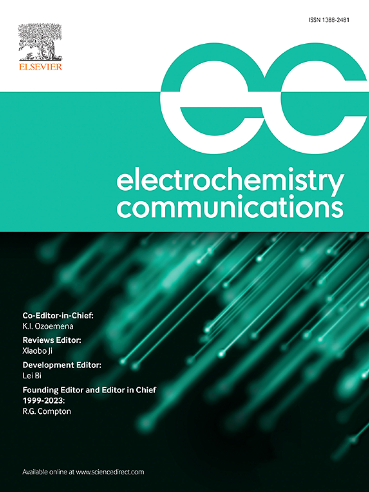Electrochemical corrosion of highly conductive Ti-Al-C, (Ti,Mo)-Al-C and (Ti,Cr)-Al-C coatings deposited by hybrid magnetron sputtering using MAX phases-based target
IF 4.2
3区 工程技术
Q2 ELECTROCHEMISTRY
引用次数: 0
Abstract
Amorphous highly conductive coatings Ti-Al-C, (Ti,Mo)-Al-C and (Ti,Cr)-Al-C were deposited on titanium alloy substrates by hybrid magnetron using T2AlC and Ti3AlC2 MAX-phases-based targets and in parallel cathode-arc evaporation of Mo or Cr targets. The (Ti,Cr)-Al-C coating showed the highest electrochemical corrosion resistance among all deposited coatings in 3.5 wt% NaCl aqueous solution at 25 °C: corrosion potential Ecorr = 0.044 V vs. saturated calomel electrode, corrosion current density icorr = 2.48 × 10−9 A/cm2. The (Ti,Cr)-Al-C coating also demonstrated the highest long-term oxidation resistance, and after heating in air at 600 °C for 1000 h, its surface electrical conductivity became even slightly higher after long-term heating: increased from σ = 9.84 × 106 S/m to σ = 4.35 × 105 S/m, which is explained by the crystallization of the amorphous coating during heating process. The nanohardness and Young's modulus of the coating after deposition were within 15 GPa and 240 GPa, respectively. The hybrid magnetron deposited (Ti,Cr)-Al-C coatings can be used to protect interconnects in lightweight molten carbonate fuel cells elements.
高导电性Ti-Al-C、(Ti,Mo)-Al-C和(Ti,Cr)-Al-C镀层的电化学腐蚀研究
以T2AlC和Ti3AlC2为基体,采用平行阴极电弧蒸发Mo或Cr为基体,采用混合磁控管在钛合金基体上制备了Ti-Al-C、(Ti,Mo)-Al-C和(Ti,Cr)-Al-C非晶高导电镀层。在3.5 wt% NaCl水溶液中,(Ti,Cr)-Al-C镀层在25℃下的电化学耐蚀性最高,腐蚀电位Ecorr = 0.044 V,腐蚀电流密度icorr = 2.48 × 10−9 A/cm2。(Ti,Cr)-Al-C涂层也表现出最高的长期抗氧化性,在600℃空气中加热1000 h后,其表面电导率甚至在长期加热后略有提高,从σ = 9.84 × 106 S/m增加到σ = 4.35 × 105 S/m,这是由于加热过程中非晶态涂层的结晶所致。沉积后涂层的纳米硬度和杨氏模量分别在15 GPa和240 GPa以内。混合磁控管沉积(Ti,Cr)-Al-C涂层可用于保护轻质熔融碳酸盐燃料电池元件的互连。
本文章由计算机程序翻译,如有差异,请以英文原文为准。
求助全文
约1分钟内获得全文
求助全文
来源期刊

Electrochemistry Communications
工程技术-电化学
CiteScore
8.50
自引率
3.70%
发文量
160
审稿时长
1.2 months
期刊介绍:
Electrochemistry Communications is an open access journal providing fast dissemination of short communications, full communications and mini reviews covering the whole field of electrochemistry which merit urgent publication. Short communications are limited to a maximum of 20,000 characters (including spaces) while full communications and mini reviews are limited to 25,000 characters (including spaces). Supplementary information is permitted for full communications and mini reviews but not for short communications. We aim to be the fastest journal in electrochemistry for these types of papers.
 求助内容:
求助内容: 应助结果提醒方式:
应助结果提醒方式:


